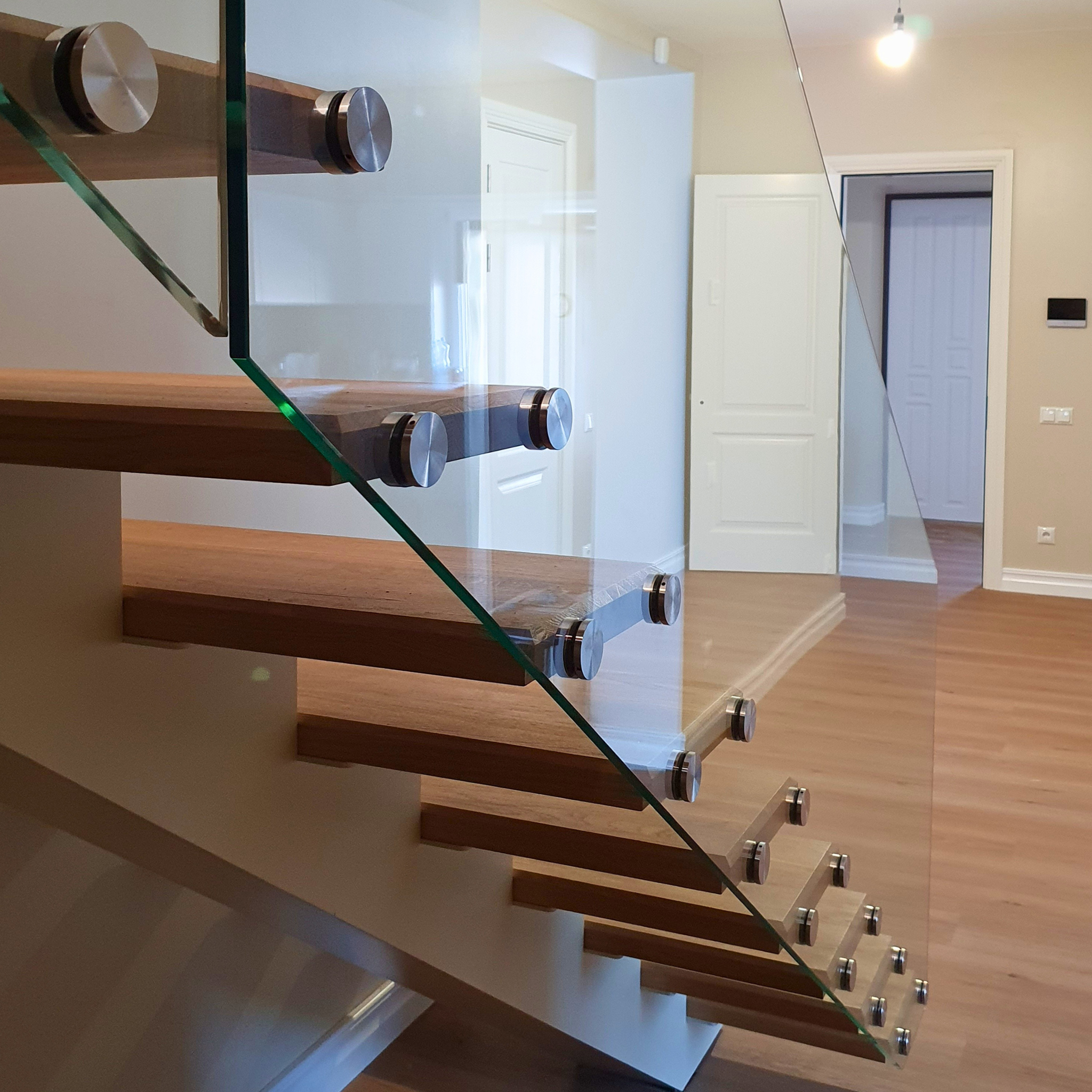
Glass Adaptors: Versatility and Applications
Glass adaptors are essential elements in glass construction, consisting of several components – the head, rubber gasket, spacer, and screw. Together, these elements ensure a secure and stable glass connection to the structure. They are particularly used in glass railings, French balconies, roofs, and other structures where both aesthetics and safety are required.

Glass railings mounted with glass adaptors
Various Sizes and Applications
Glass adaptors are available in various sizes, ranging from 12 mm to 70 mm in diameter. Smaller adaptors, such as those with a diameter of 12–19 mm, are suitable for securing plates and lightweight structures, while larger ones, such as 30–70 mm in diameter, are used for mounting larger glass structures.
In addition to diameter, the thickness of the spacer in glass adaptors can vary from 4 mm to 50 mm. This variety allows adaptors to be tailored to specific construction requirements.

MINI glass adaptor with a 12mm diameter
Shapes and Design Variations
Glass adaptors are available in both round and square shapes. The head shape can be flat or spherical, while the spacer design depends on the mounting surface. For example:
- For flat surfaces: the spacer is straight.
- For pipe fixings: the spacer has rounded ends, adapting to the pipe shape (diameter 42.4 mm or 33.7 mm).


Glass adaptor with a flat head on a pipe

Glass adaptor with a spherical surface
Adjustable and Non-Adjustable Adaptors
Glass adaptors are divided into two categories:
-
Non-adjustable adaptors: These have a simpler design without threads in the spacer, where the glass is pressed directly against the supporting structure.
-
Adjustable adaptors: These allow adjustment by changing the position of the spacer. For example:
- A spacer with threads allows adjusting the distance from the structure.
- A split spacer with a cup, where the cup is attached to the structure, and the spacer's top part adjusts on the cup, ensuring more precise and aesthetic alignment.


Adjustable glass adaptor with a threaded spacer

Adjustable glass adaptor with a cup
Additional Elements and Kits
There are kits available that allow the connection of two glass panels in a straight direction, at a 90° angle, or to railing posts. These kits include connection plates and other necessary elements. Separate components such as heads, spacers, or rubber gaskets are also available.

Glass adaptor kit to connect two glass panels at a 90-degree angle
Materials and Finishes
Glass adaptors are primarily made from stainless steel (AISI304 or AISI316). The surface finish can be brushed, polished, or painted. The most popular colors include:
- Black (RAL 9005)
- Gray (RAL 7016)
- White (RAL 9003)
- Gold (matte or polished)

Glass adaptor painted in black (RAL 9005)

Glass adaptor painted gold, brushed
Summary
Glass adaptors offer a wide range of sizes, shapes, and materials, making them suitable for both aesthetic and functional purposes. Their versatility ensures that every project can be executed with maximum precision and efficiency.





Leave a comment
This site is protected by hCaptcha and the hCaptcha Privacy Policy and Terms of Service apply.